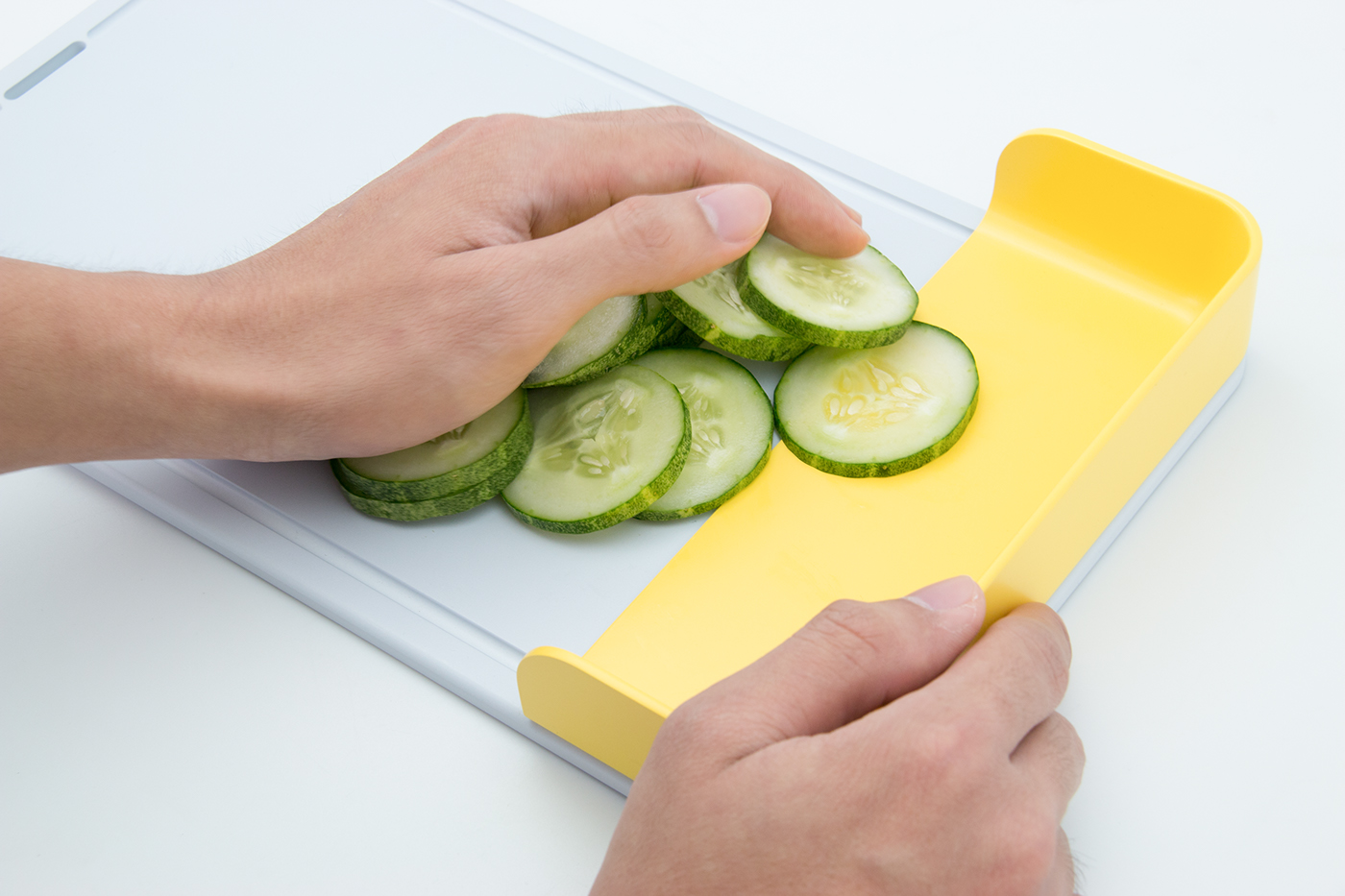Cooking for the Blind
Preparing a meal with convenience, confidence and dignity.
Cooking is a challenging ritual for the blind due to the lack of sensory references which are crucial to help them map out the environment. To overcome the steep learning curve, “Folks”, a series of familiar kitchen tools, leverages on natural, sensory feedback and tactile cues to pre-empt and inform the blind such that they can prepare food safely with convenience, confidence and dignity.
Inspiration & Insights
Even with sight, cooking can be daunting, much less without vision. For the blind, preparing food naturally becomes challenging as they learn to cope with the uncertainties of spills or injuries like knife cuts or burns.

I was thus surprised to find blind MasterChef Christine Ha working the stove and knife like a seasoned hand. Later, I come to understand that she could accomplish this only through rigorous practice. This process however takes time and can be demoralising in early stages due to injuries - to an extent it discourages many from continuing. I was thus curious as to how we can imbue these individuals with confidence so that they can overcome physical and mental barriers to attempt and appreciate cooking.

Essentially, I realised that the blind’s actions are guided by spatial judgements which are formed by sensory references – our bodily senses.

Accidents occur when they have insufficient information of the environment due to the lack of cues. As it turns out, when rich, tactile feedback is provided to inform the blind of a particular result, they can better grasp the context and avoid making poor judgements. Hence, this became the seed for the Folks initiative.
How does Folks Work?
Introduced as a system, Folks taps into the adjusted sensory strengths (like touch or hearing) of the blind. The collection consists of 5 products.

001 Knife
Poor hand postures, irregularly-shaped ingredients and dull knives lead to cuts which dissuade the blind from cooking. To help them gain tool confidence, a retractable guard serves as a physical anchor and guides the fingers during the cutting process. This encourages blade contact, making it safer for the blind.





It also allows them to clean off any food that is stuck on the blade with a simple trigger. After usage, the guard can be removed for cleaning with a simple nudge of the trigger.

Prototypes are tested with blind individuals to evaluate the solution's effectiveness.

Comparison Video
002 Chopping Board
The side tray, which pegs freely on the sides of the chopping board’s valley, which is created to drain excess juices, acts as an extension of the hand to gather and efficiently transfer ingredients with less spillage.






Prototypes are tested with blind individuals to evaluate the solution's effectiveness.

Comparison Video
003 Stove Ring
The ring’s terraced profile allows the user to effectively recognise the burner’s boundaries, eliminating unnecessary probing. It also centralises and secures cookware in place during the cooking process. Such prevents topples and hence spills.


Prototypes are tested with blind individuals to evaluate the solution's effectiveness.

Comparison Video
004 Pot Lid
It is common for the blind to prepare an extra vessel, e.g. bowl, to house the cooking utensils. Leveraging on this behaviour, the lid provides a convenient nesting spot for kitchen tools or ingredients.


Its pronounced spout also helps the user to identify the steam outlet with ease, avoiding risks of burns or scalds.


Prototypes are tested with blind individuals to evaluate the solution's effectiveness.

Comparison Video
005 Teaspoon
The teaspoon’s integrated float rises as liquids are added into a given vessel, e.g. cup. When the float touches the user’s fingers, which are normally situated near the rim of the vessel, it informs the water level and prevents content from overflowing.


It also prevents the fingers from making premature contact with the liquid. This becomes a useful cue when hot content are transferred.



Prototypes are tested with blind individuals to evaluate the solution's effectiveness.

Comparison Video
Why Folks?
The collection was designed to express familiar warmth - a line of kitchen tools that allows the blind to prepare food just like common folks.
Stages of Development
The project is grounded by literature reviews on existing approaches and ethnography research. To better understand the users’ pain points, interviews and observations were done in their homes. This provided first-hand information that was used for user experience mapping to highlight design opportunities.

Concept Development
From research, the blind rely heavily on sensory references like touch to make spatial judgements – the lack of such often results in accidents. Thus the solutions physicalize tactile guides which they can reference for the next step in the cooking process.
001 Knife



002 Chopping Board



003 Stove Ring



004 Pot Lid



005 Teaspoon



Feedback

Next Steps
At the moment, Folks addresses selected, essential aspects of having a meal. This line can thus be expanded upon with further validation from a larger audience to thoroughly evaluate the collection’s effectiveness.

With the seed fund from NUS Enterprise’s Practicum Award to work on the prototype development, I hope to optimise the products for a small scale production and launch the collection through social organisations like Project Dignity in Singapore. It is my humble wish that Folks can eventually reach the homes of the blind so that more individuals can prepare food with dignity and confidence like MasterChef Christine Ha.
Folks is also selected to exhibit in the 3rd run of the Global Graduation Show during the Dubai Design Week which runs from 13th to 18th November 2017.
Folk's Press Kit can be accessed here.






